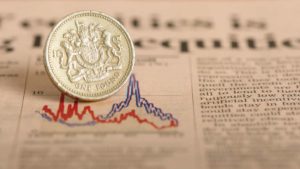Leveraging the power of dividend stocks is a great way to aim for a lucrative second income. What’s more, investing with a Stocks and Shares ISA is an ideal way to maximise returns by shielding against unnecessary taxes.
Indeed, UK residents can invest up to £20,000 a year with no tax paid on the capital gains!
Please note that tax treatment depends on the individual circumstances of each client and may be subject to change in future. The content in this article is provided for information purposes only. It is not intended to be, neither does it constitute, any form of tax advice. Readers are responsible for carrying out their own due diligence and for obtaining professional advice before making any investment decisions.
With that in mind, let’s investigate how investors can aim to secure a £30k passive income stream, starting with an empty ISA.
Quick maths
The typical UK dividend share on the FTSE 100 has an average yield of around 3.5%. But this percentage is brought down by some high-priced stocks. By carefully selecting the right shares, it’s easy to construct a portfolio offering a higher yield — and with minimal extra risk. Especially in the current market, with many FTSE shares trading far below their fair valuation.
For example, to target a second income of £30,000 in dividends with an average 7% yield, I’d need about £428,400. That’s no small amount. But when thinking long-term, it’s not impossible to achieve. I just need to harness the power of compounding returns.
Assuming the same portfolio returns, with the market average of 4% in capital gains, If I started investing £250 a month, I could reach my goal in just over 27 years (with dividends reinvested). That’s more than enough time before retirement. If I could afford to double my monthly investment to £500, I could achieve the goal in just 21 years.
But an example based on lofty assumptions is one thing. Reality may deliver a very different set of results. Geopolitics, environmental changes and consumer habits could all affect how markets rise and fall. These averages simply provide a middle ground to work on — and the longer the timeline, the higher the possibility of deviation.
In other words, the final results could be very different.
A 7%-yielding stock to get started?
One stock that could be worth considering for that kind of portfolio is HSBC (LSE: HSBA). Its yield currently stands at 7% and has delivered annualised returns of 4.4% over the past 30 years. The dividend amount has fluctuated over the past 20 years, but payments have been fairly consistent.
The share price hit a five-year high of 705p in May, after gaining over 100% since its September 2020 low. And still it doesn’t appear overvalued, with a price-to-earnings (P/E) ratio of only 7.4.
But with interest rate cuts imminent, that could change soon.
Another thing that concerns me is the bank’s heavy exposure to the Chinese economy. It could take a hit if the US follows through on threats to limit exports of its semiconductor technology. HSBC’s earnings are already looking shaky, with profits and revenue expected to decline in the next earnings report.
In an effort to preempt the results and boost shareholder returns, the bank announced a new $3bn share buyback programme in April. This should help to offset any price correction.
HSBC’s just one example. An income portfolio needn’t be restricted to 7% yields. Adding a few 8% or 9% yields in combination with 5% or 6% ones would achieve the same average. A well-diversified portfolio should include shares from a variety of different sectors and regions.
This post was originally published on Motley Fool







